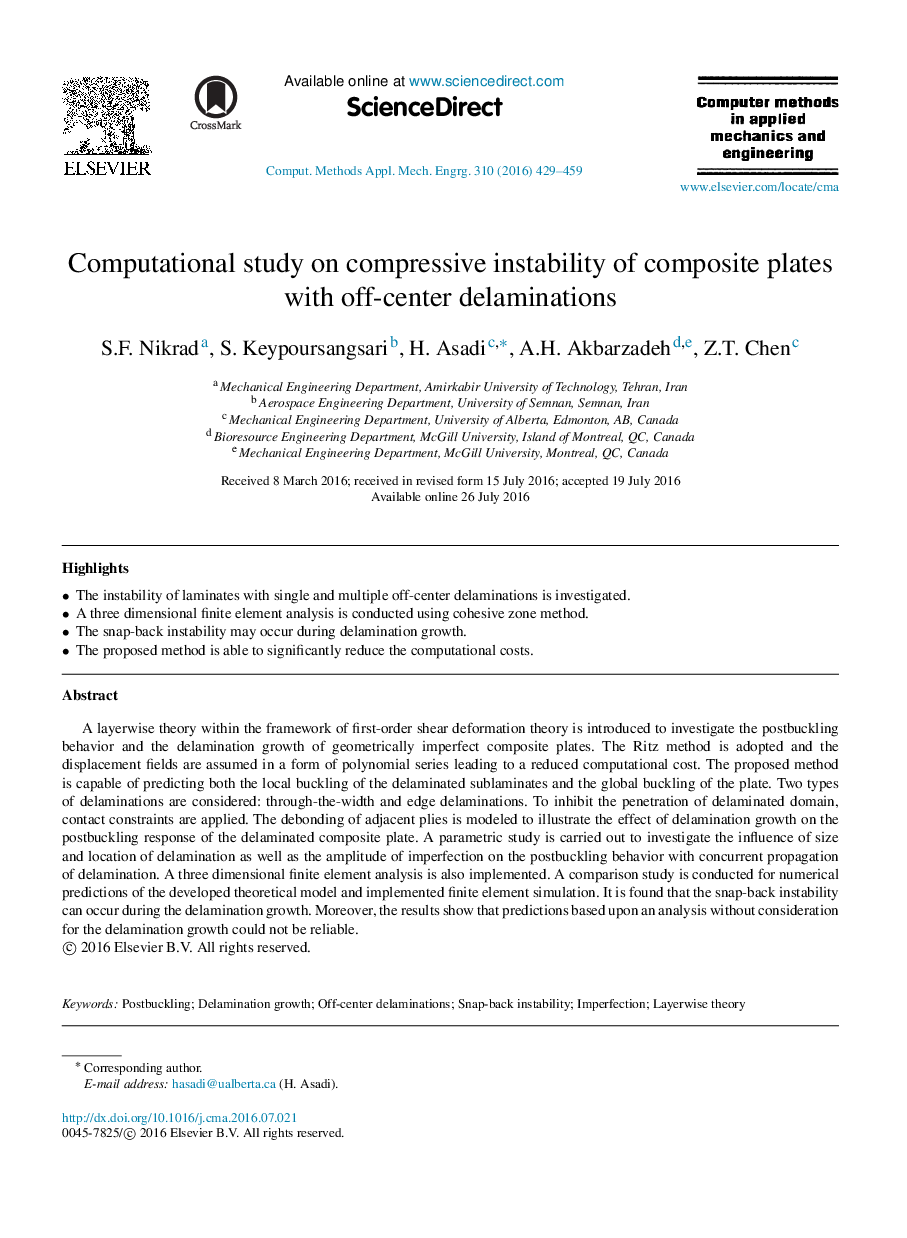| Article ID | Journal | Published Year | Pages | File Type |
|---|---|---|---|---|
| 497590 | Computer Methods in Applied Mechanics and Engineering | 2016 | 31 Pages |
•The instability of laminates with single and multiple off-center delaminations is investigated.•A three dimensional finite element analysis is conducted using cohesive zone method.•The snap-back instability may occur during delamination growth.•The proposed method is able to significantly reduce the computational costs.
A layerwise theory within the framework of first-order shear deformation theory is introduced to investigate the postbuckling behavior and the delamination growth of geometrically imperfect composite plates. The Ritz method is adopted and the displacement fields are assumed in a form of polynomial series leading to a reduced computational cost. The proposed method is capable of predicting both the local buckling of the delaminated sublaminates and the global buckling of the plate. Two types of delaminations are considered: through-the-width and edge delaminations. To inhibit the penetration of delaminated domain, contact constraints are applied. The debonding of adjacent plies is modeled to illustrate the effect of delamination growth on the postbuckling response of the delaminated composite plate. A parametric study is carried out to investigate the influence of size and location of delamination as well as the amplitude of imperfection on the postbuckling behavior with concurrent propagation of delamination. A three dimensional finite element analysis is also implemented. A comparison study is conducted for numerical predictions of the developed theoretical model and implemented finite element simulation. It is found that the snap-back instability can occur during the delamination growth. Moreover, the results show that predictions based upon an analysis without consideration for the delamination growth could not be reliable.
